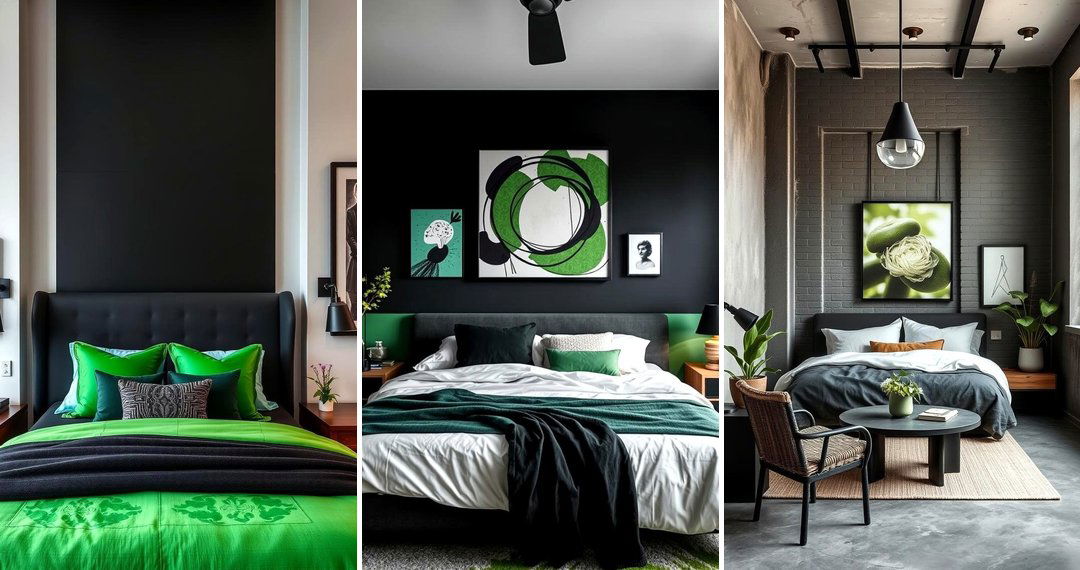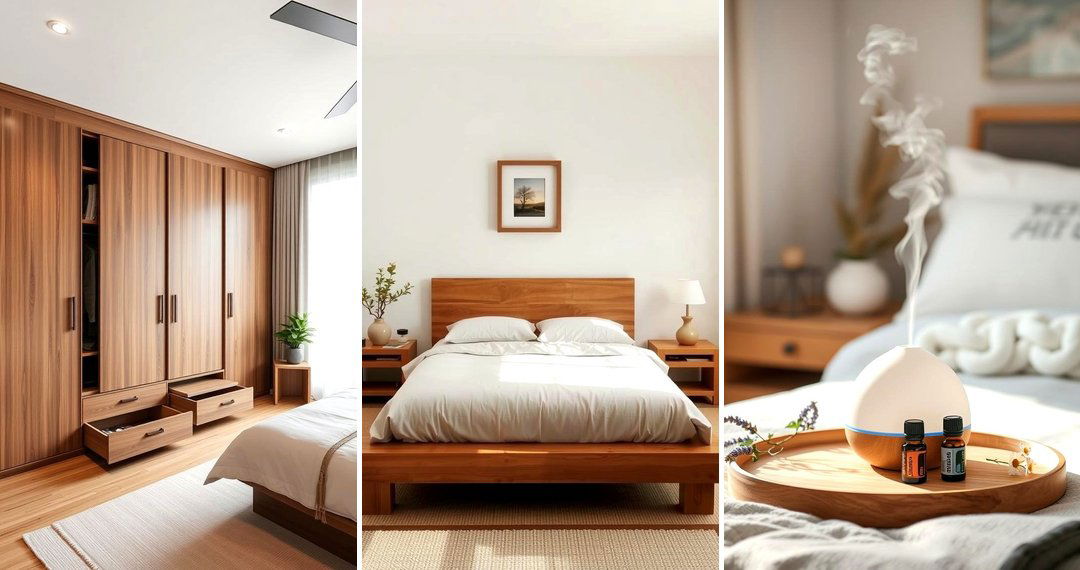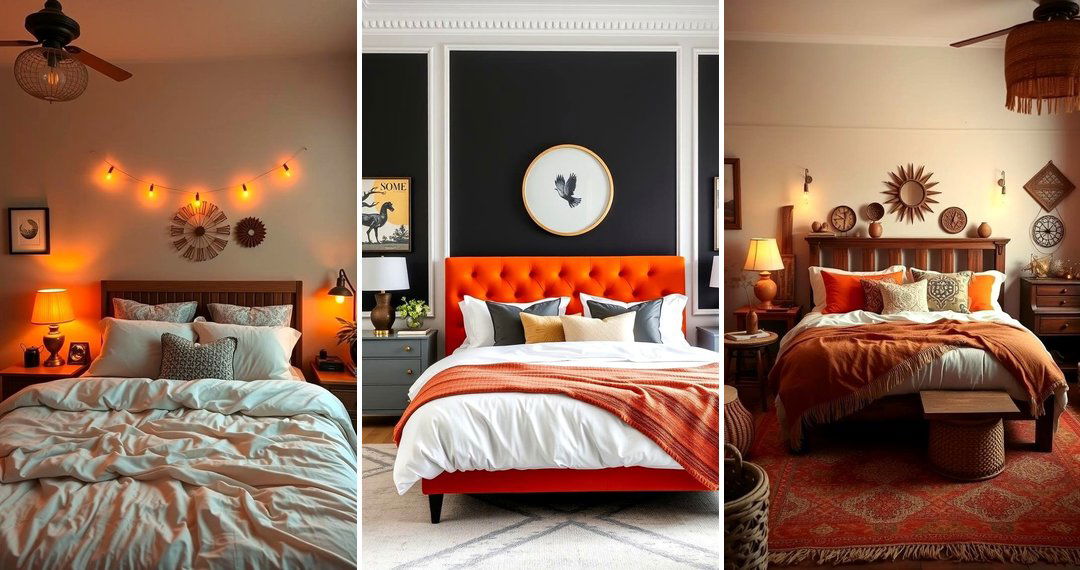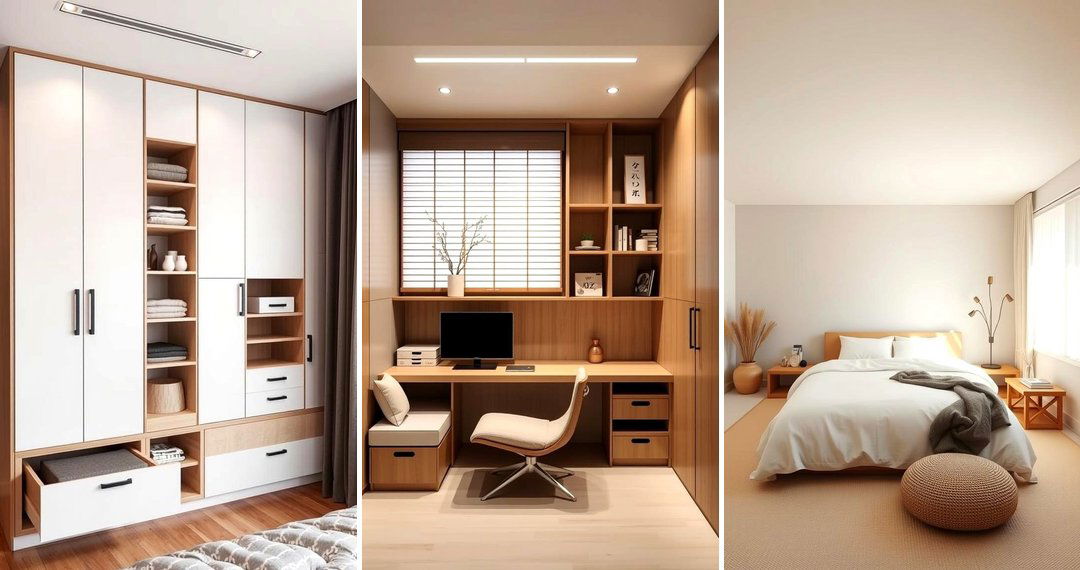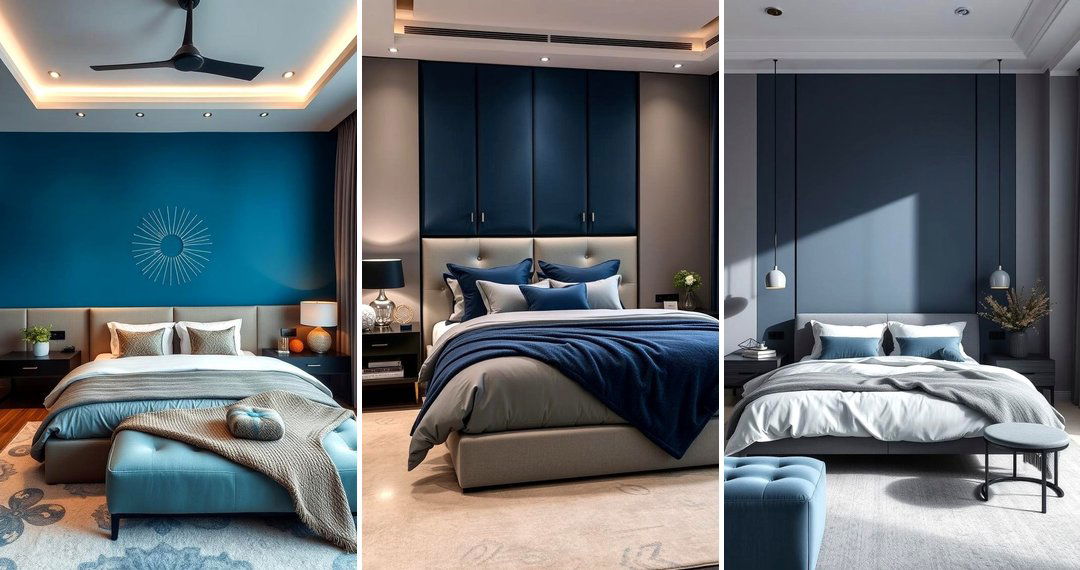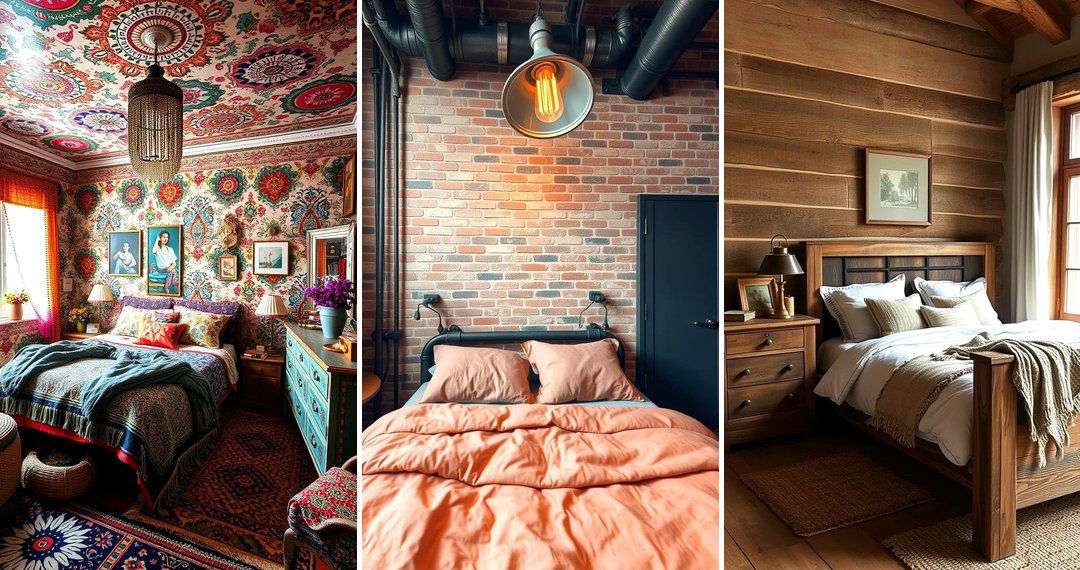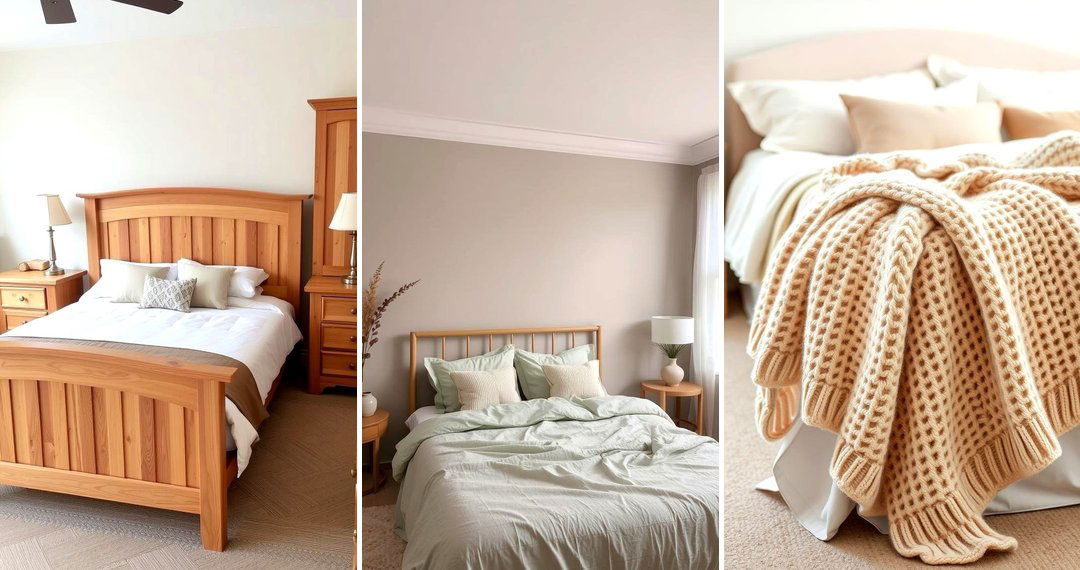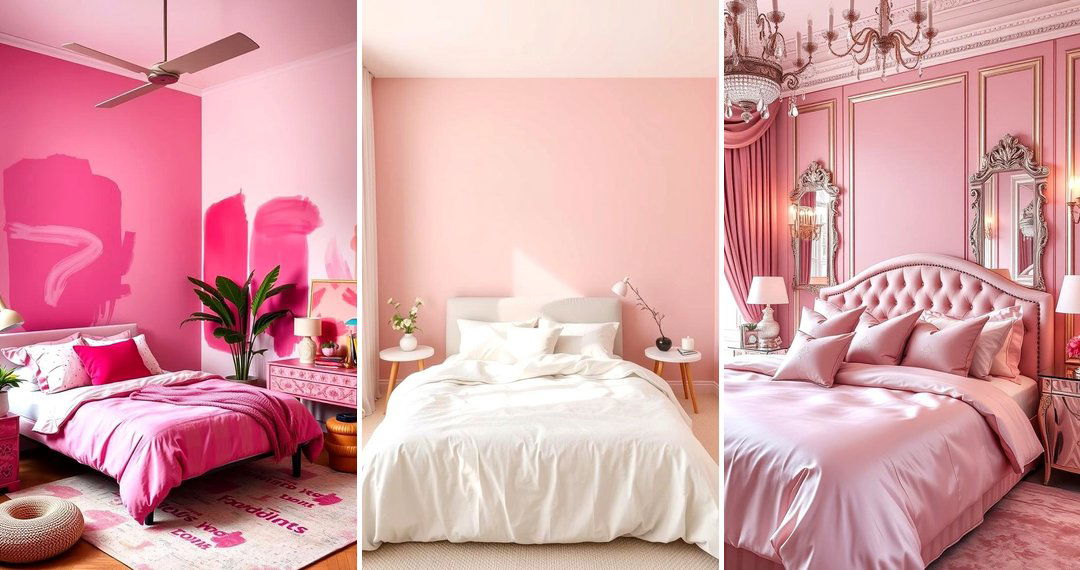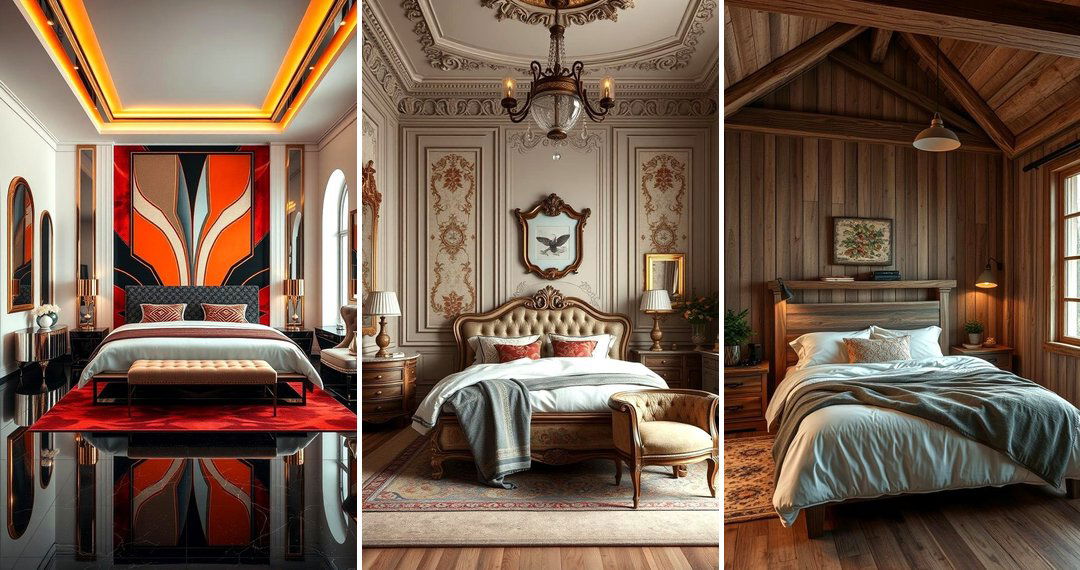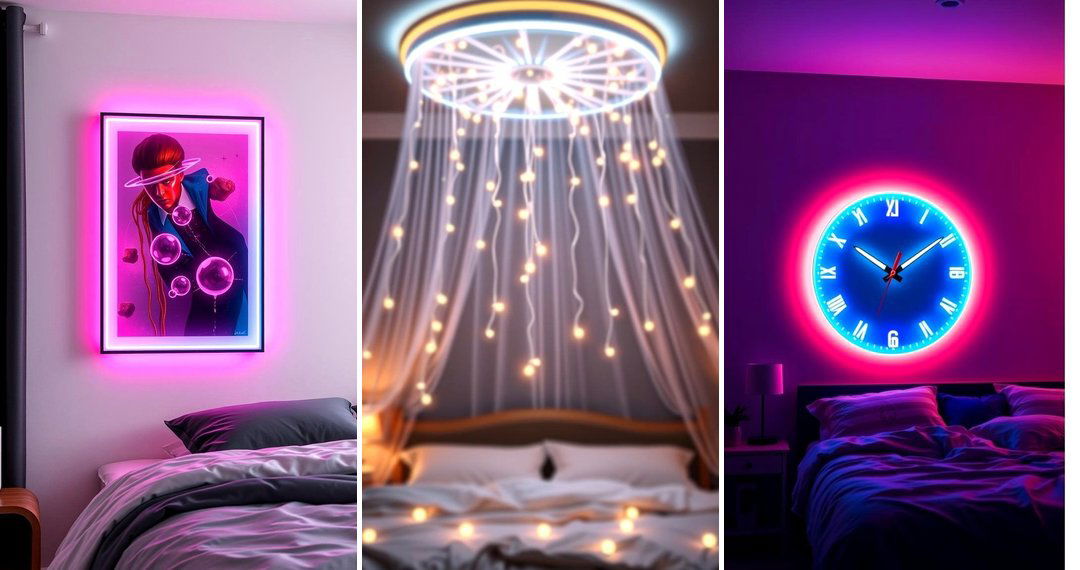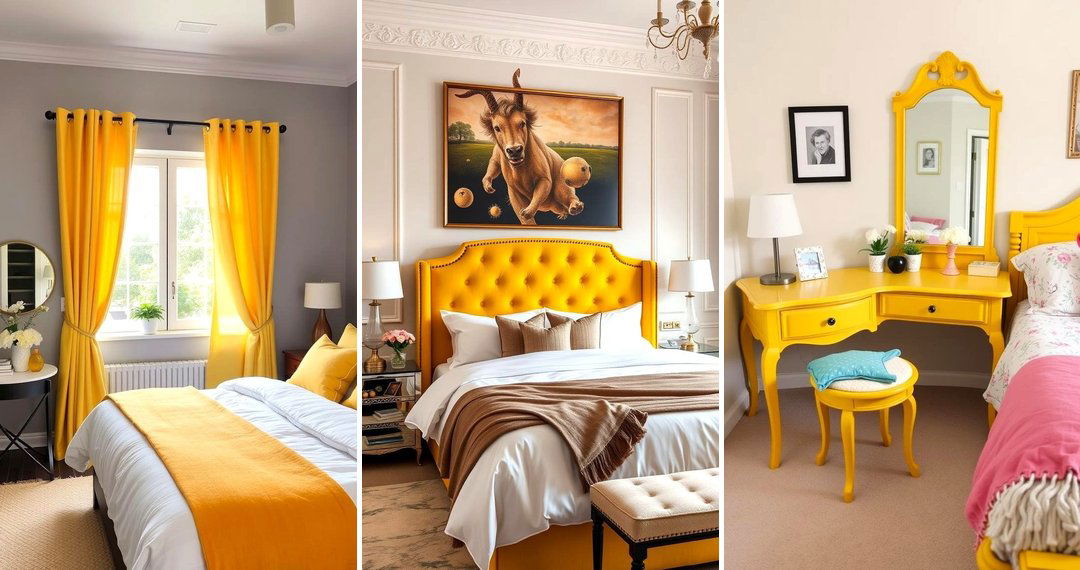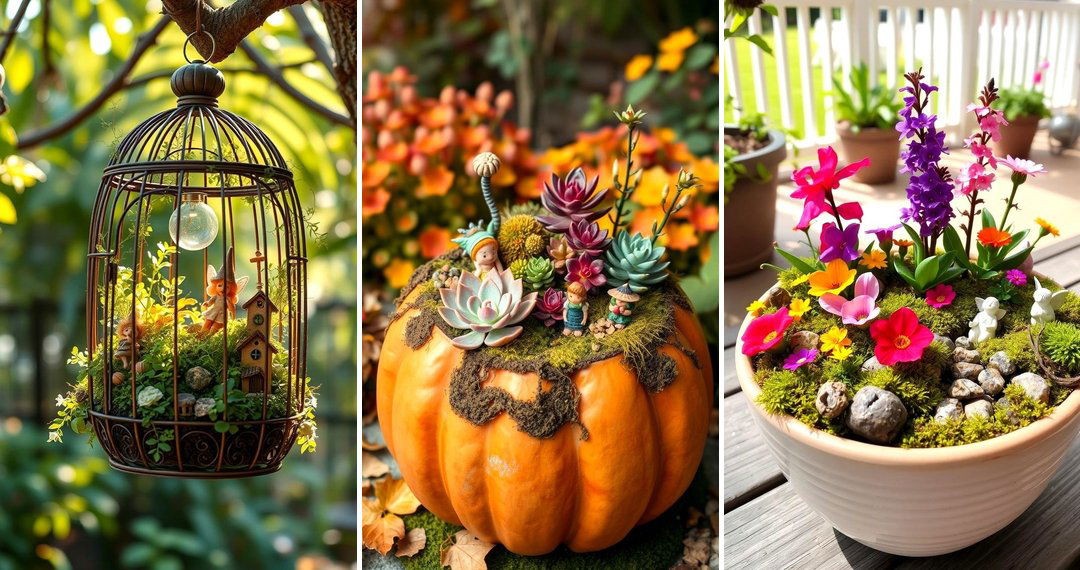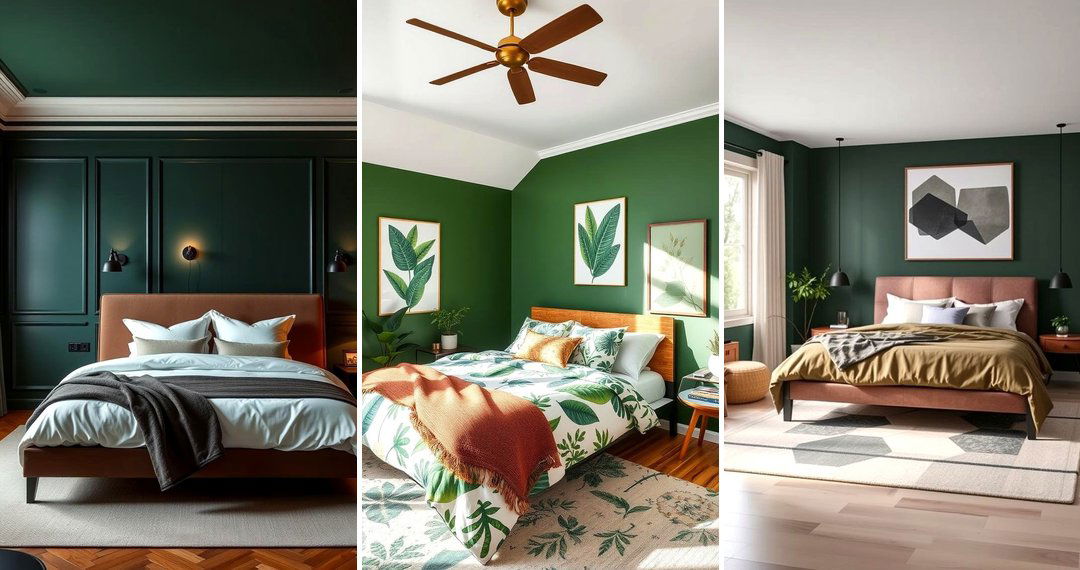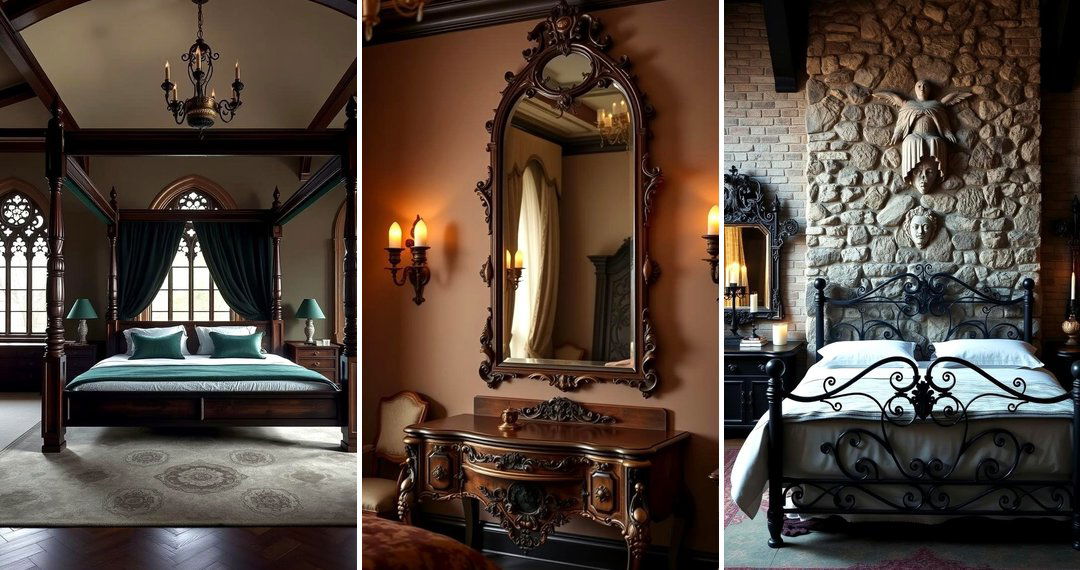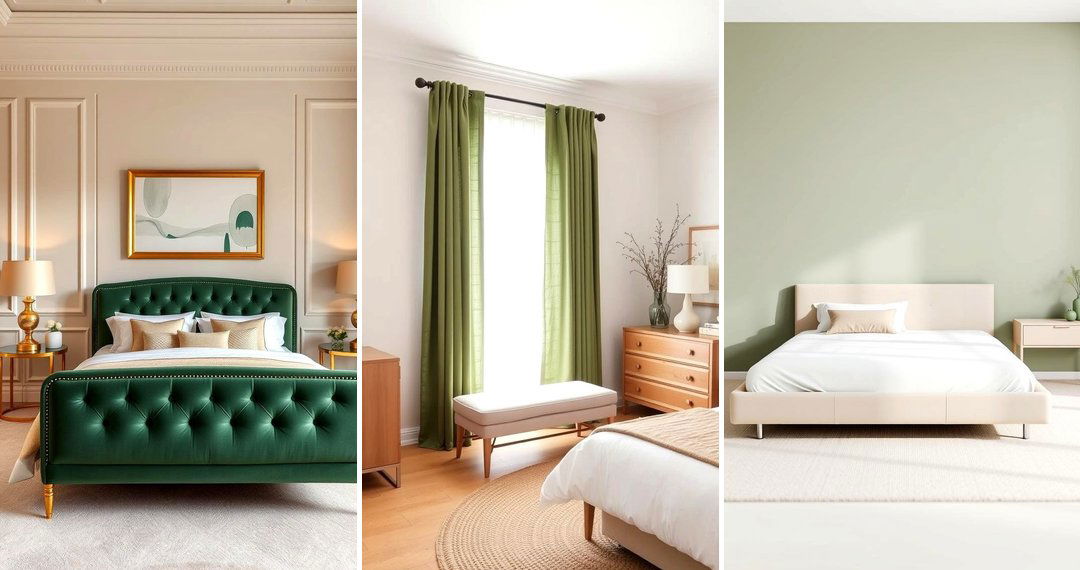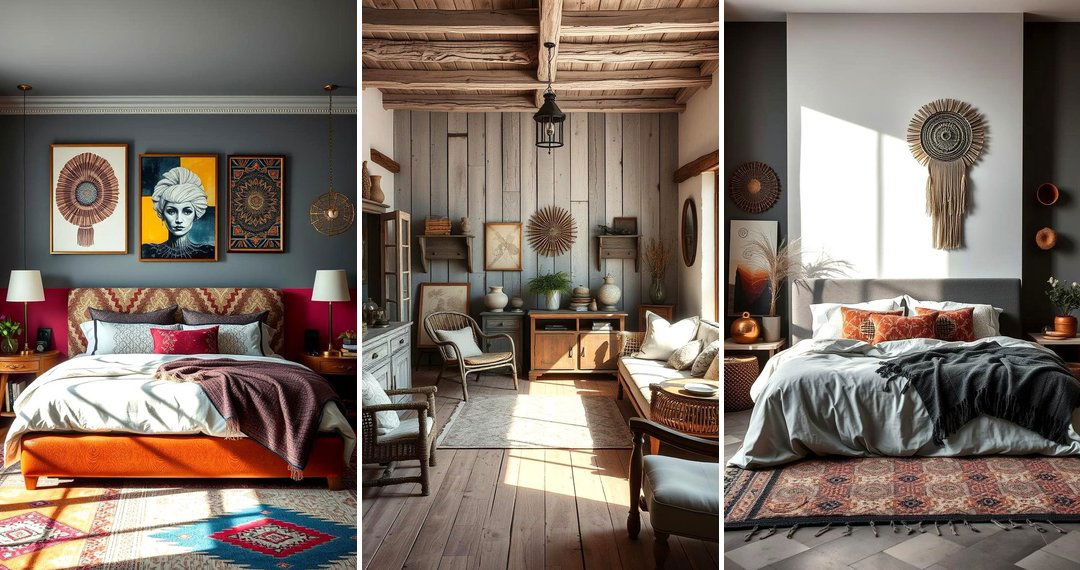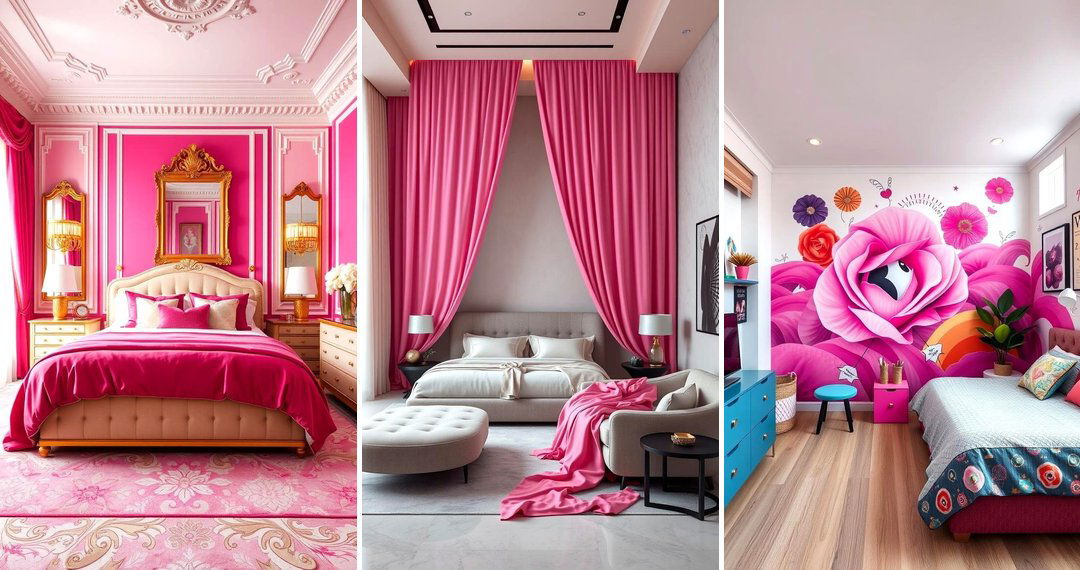In the realm of interior design, the allure of Japanese aesthetics has captivated hearts worldwide, offering a sanctuary of tranquility and understated elegance. Rooted in principles of simplicity, naturalism, and functionality, Japanese bedroom design transcends mere decoration, aiming to create a harmonious space that promotes relaxation and mindfulness. The essence lies in decluttering both the physical environment and the mind, fostering a sense of peace and serenity. Exploring the nuances of these design philosophies can transform your personal space into a haven of calm, inviting you to discover the art of Japanese-inspired living. Let's delve into the captivating world of Japanese bedroom design ideas and uncover the secrets to creating your own tranquil retreat.

1. Embrace the Serenity of Tatami Mat Flooring
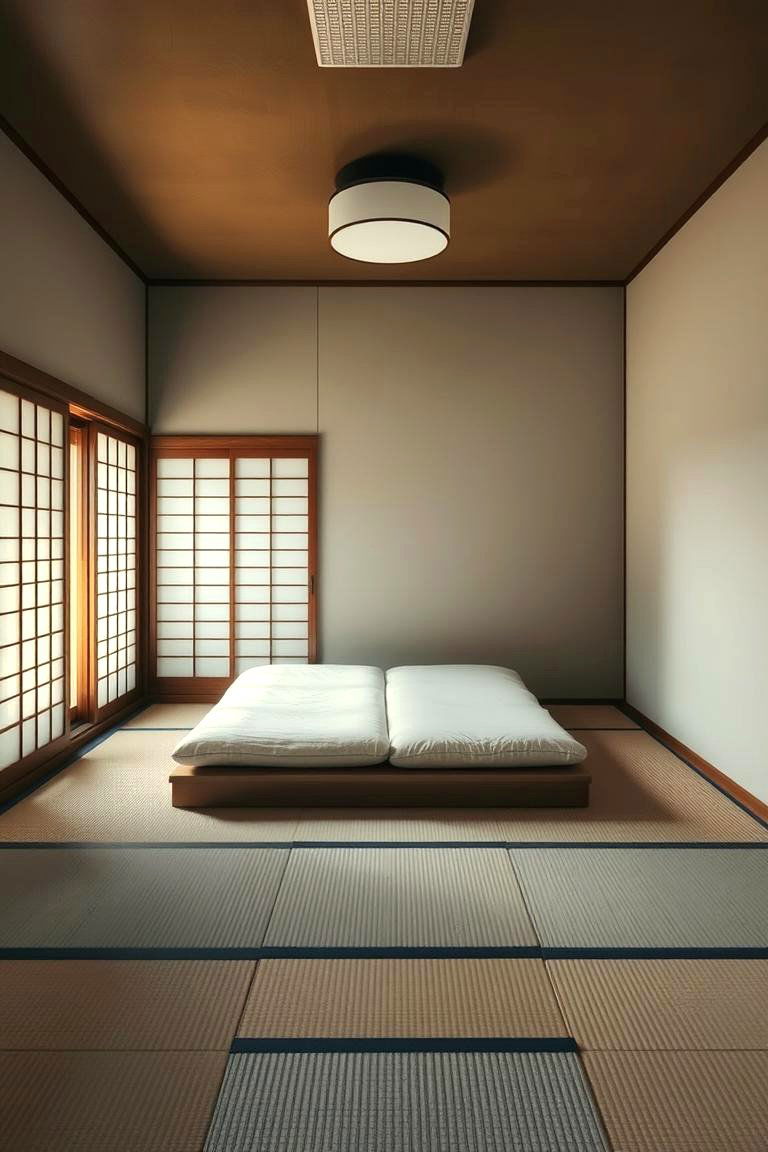
The gentle texture and natural aroma of tatami mats instantly introduce a Japanese sensibility to any bedroom. Beyond their aesthetic appeal, these woven rice straw mats offer a comfortable and supportive surface underfoot. Consider the practical benefit of their natural insulation, which helps regulate room temperature throughout the year. Moreover, the modular nature of tatami allows for flexible layout options, easily defining the sleeping area or creating pathways within the room. Embracing this traditional flooring is a foundational step towards achieving an authentic Japanese bedroom design.
2. Divide and Conquer with Elegant Shoji Screens
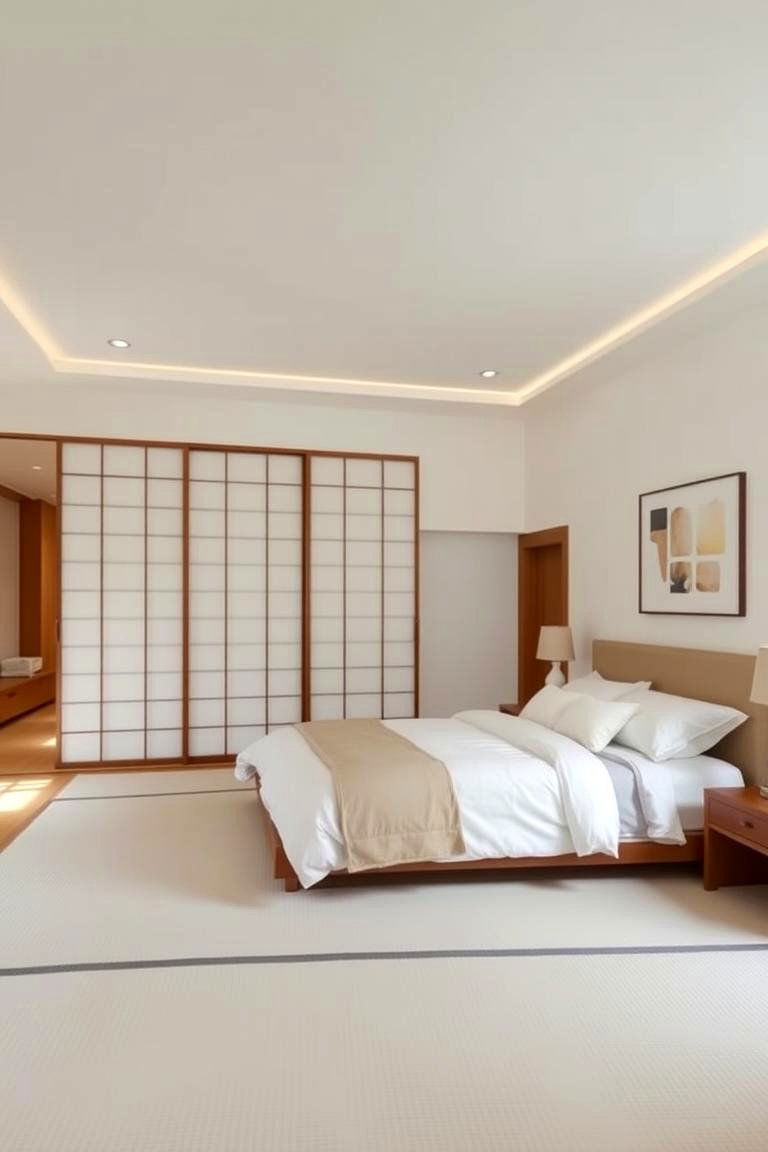
With their delicate wooden frames and translucent washi paper panels, shoji screens are more than just room dividers; they are works of art that softly diffuse light and create a sense of spaciousness. These versatile screens offer a flexible solution for partitioning a larger room into distinct zones, perhaps separating a sleeping area from a dressing space or a reading nook. The lightweight nature of shoji screens makes them easy to move and reconfigure, allowing for adaptability in your bedroom layout. Their inherent beauty adds a touch of traditional Japanese charm while maintaining an open and airy feel.
3. Experience Restful Nights on a Comfortable Futon
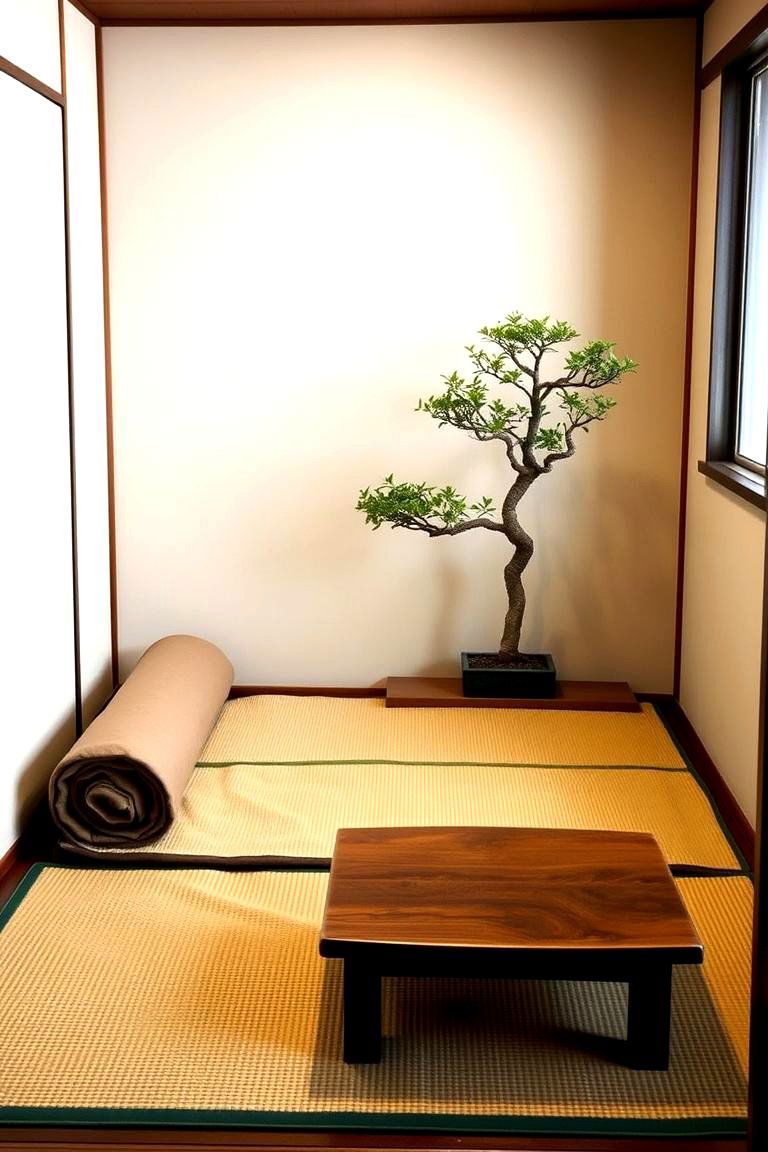
Consider the simplicity and practicality of a traditional Japanese futon. Unlike bulky Western mattresses, a futon is a padded mattress that can be easily rolled up and stored away during the day, freeing up valuable floor space. This is particularly beneficial in smaller bedrooms where maximizing functionality is key. The experience of sleeping on a futon, often placed directly on tatami mats, promotes a closer connection to the floor, which some find grounding and conducive to better sleep. Embracing a futon is a commitment to minimalist living and efficient space utilization.
4. Ground Your Space with a Low Platform Bed
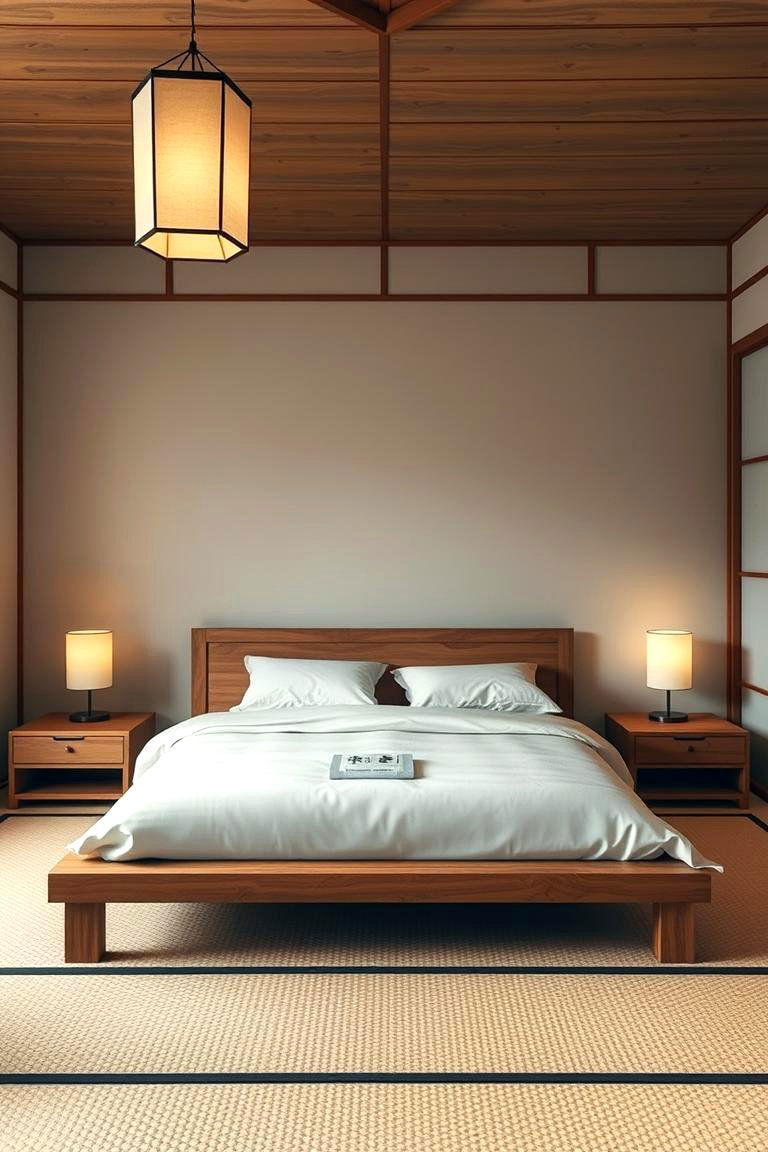
Another cornerstone of Japanese bedroom design is the low platform bed. These beds, often just a few inches off the ground, contribute to the room's overall sense of spaciousness and tranquility. The lower profile creates a visual effect of higher ceilings, making the room feel more expansive. Furthermore, the simplicity of a platform bed emphasizes clean lines and unadorned elegance, aligning perfectly with the minimalist principles of Japanese design. Opting for a low platform bed is a subtle yet impactful way to enhance the serene atmosphere of your bedroom.
5. Infuse Warmth with Natural Wood Accents
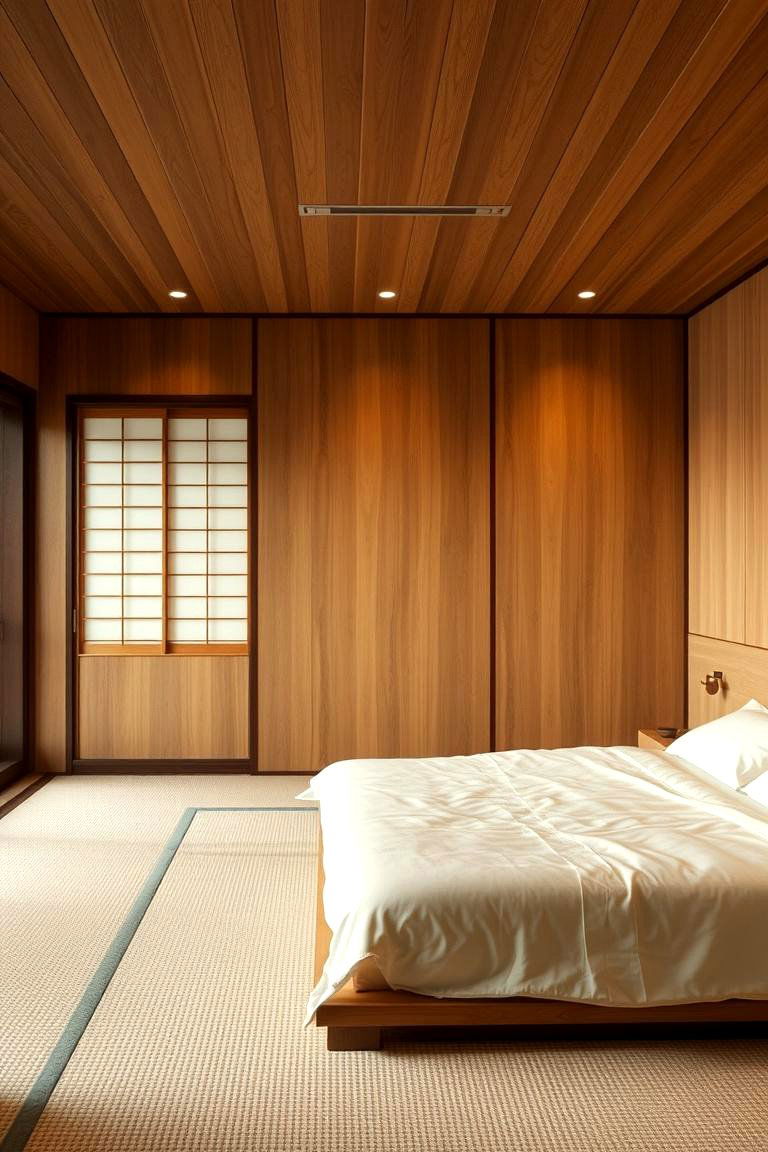
Bringing the outdoors in is a key element of Japanese design, and the use of natural wood is paramount in achieving this. Consider incorporating wooden elements in furniture, such as bed frames, nightstands, or even wall paneling. The warm tones and natural textures of wood create a sense of organic beauty and connection to nature. This can range from light-colored woods like cedar and cypress to darker tones for a more dramatic effect. Integrating natural wood accents adds a layer of comfort and authenticity to your Japanese-inspired bedroom.
6. Embrace the Beauty of Minimalist Decor
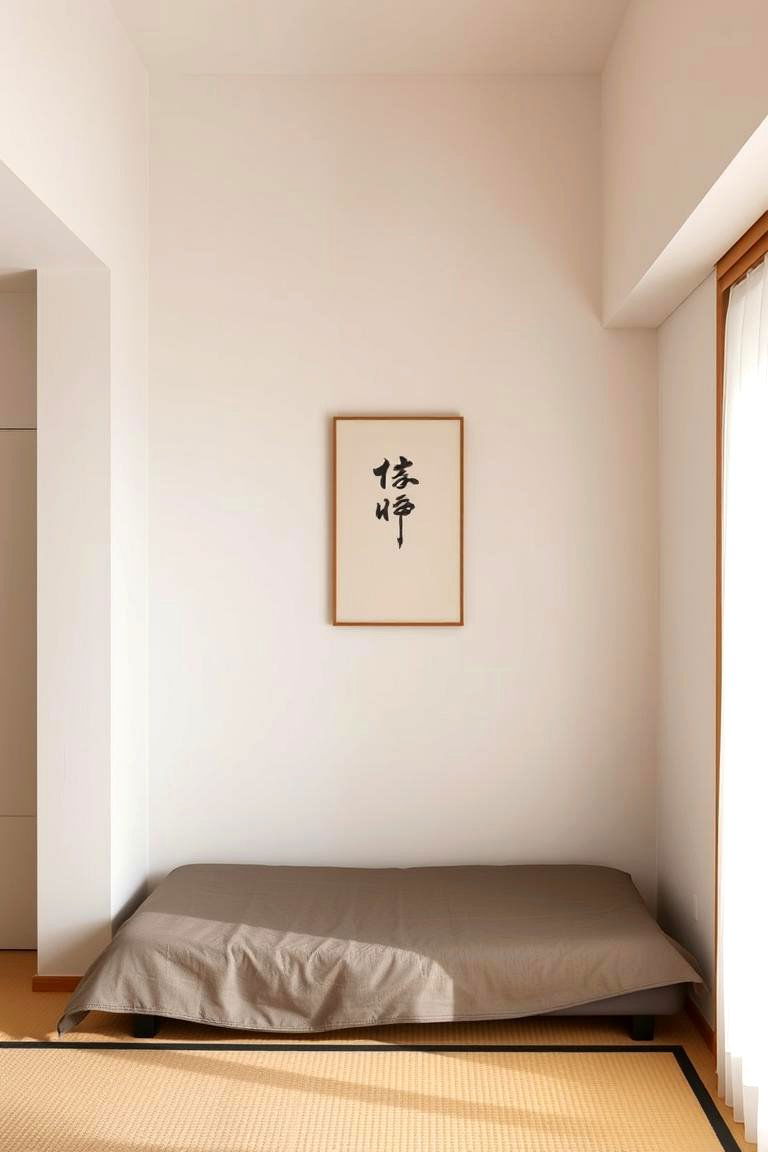
What truly defines a Japanese bedroom is its commitment to minimalism. This means carefully selecting each item and avoiding unnecessary clutter. The focus is on functionality and the beauty of empty space, known as "ma." Take a moment to declutter your existing bedroom, removing anything that doesn't serve a purpose or bring you joy. Opt for a few carefully chosen decorative items, such as a single piece of artwork or a simple vase, rather than numerous small trinkets. Embracing minimalism fosters a sense of calm and allows the essential elements of the room to shine.
7. Maximize Space with Functional Sliding Doors (Fusuma)
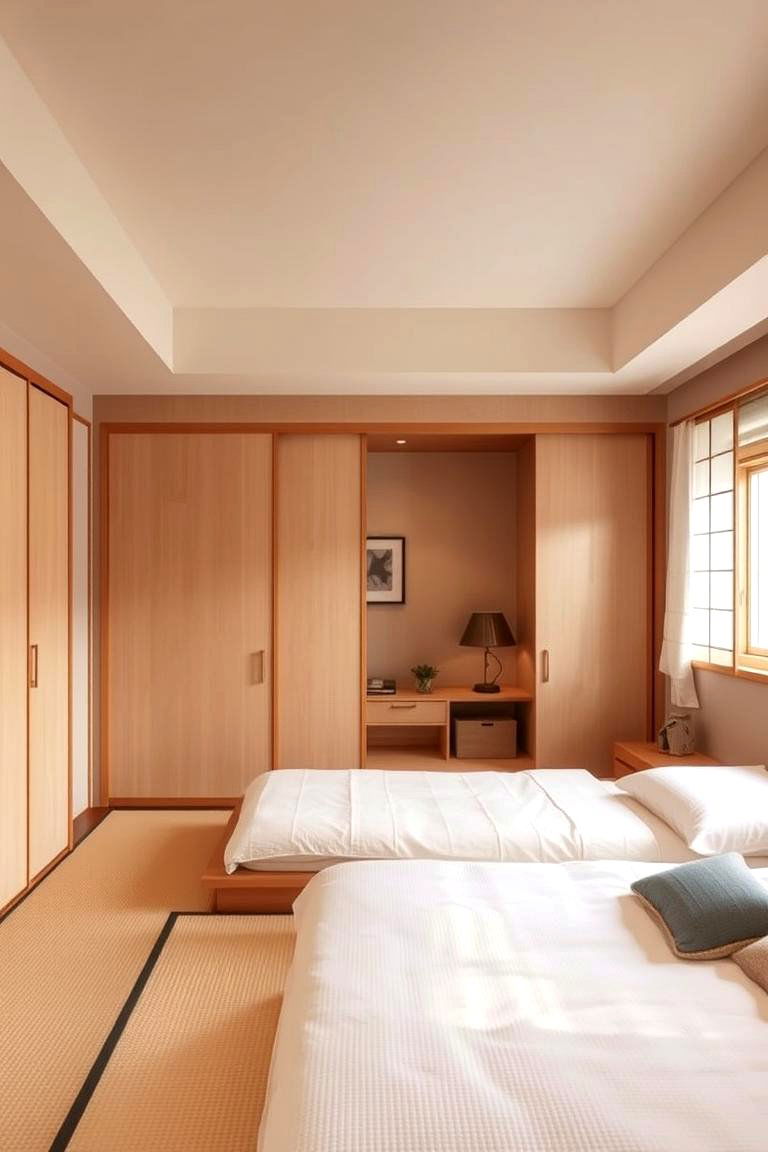
For those seeking to optimize space and maintain a seamless flow, consider incorporating fusuma, traditional Japanese sliding doors. Often used for closets or to divide rooms, fusuma are lightweight and easy to operate. Their smooth, flat surfaces can be adorned with subtle patterns or left plain for a clean look. The practicality of sliding doors lies in their ability to save space compared to traditional swinging doors, making them ideal for smaller bedrooms. Integrating fusuma adds an authentic touch of Japanese architecture and enhances the functionality of your space.
8. Streamline Storage with Clever Built-in Solutions
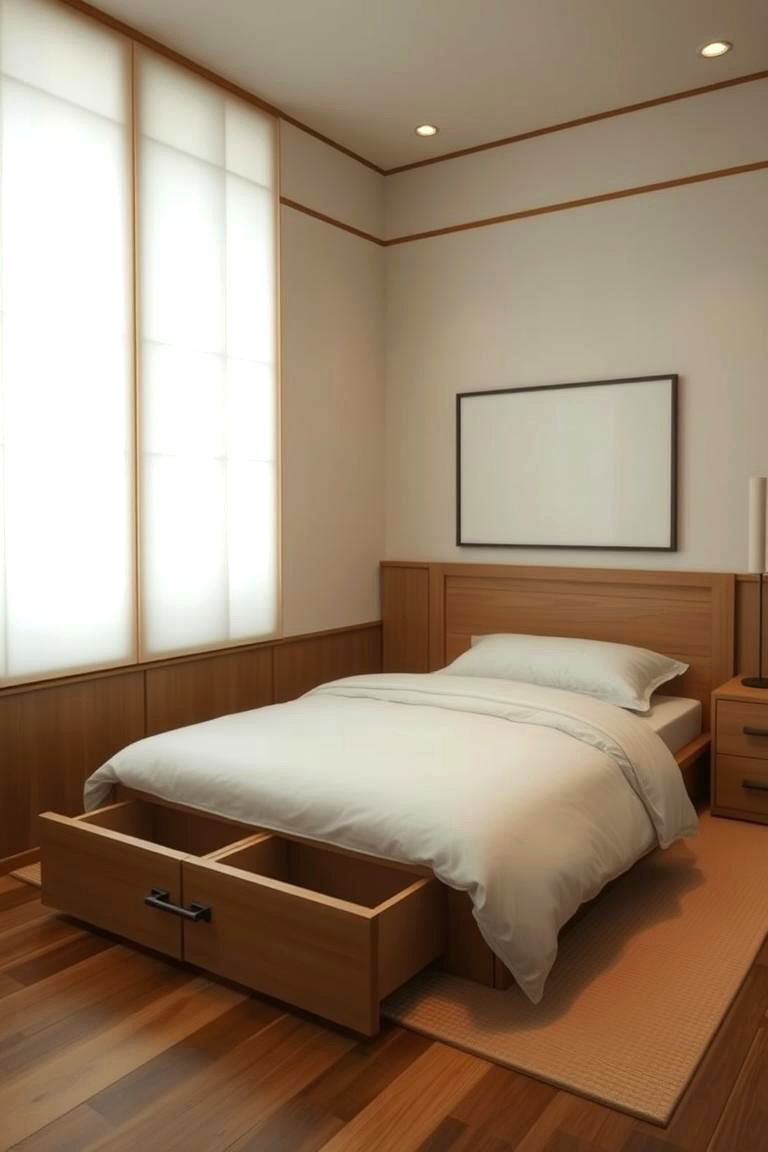
To maintain a clutter-free environment, essential in Japanese design, consider incorporating built-in storage solutions. This could include recessed shelving, drawers integrated into the platform bed, or a minimalist wardrobe that blends seamlessly with the walls. The goal is to have a place for everything, keeping surfaces clear and the overall aesthetic uncluttered. Built-in storage not only maximizes space but also contributes to the clean lines and harmonious feel of a Japanese bedroom.
9. Create a Tranquil Ambiance with a Neutral Color Palette
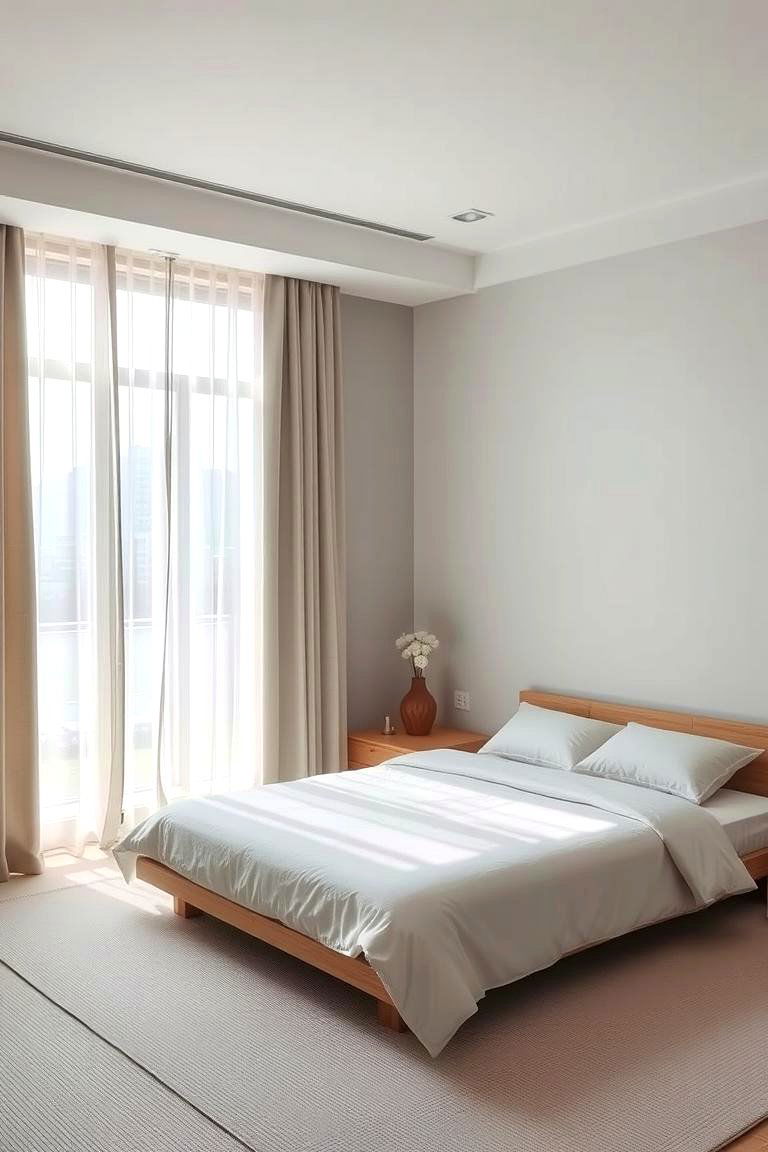
A hallmark of Japanese bedroom design is the use of a calming and neutral color palette. Think soft whites, creams, grays, and earthy tones. These colors evoke a sense of peace and tranquility, creating a soothing backdrop for rest and relaxation. While subtle pops of color can be introduced through accessories like cushions or artwork, the overall emphasis remains on a harmonious and understated palette. Embracing neutral colors is fundamental to achieving the serene atmosphere of a Japanese-inspired bedroom.
10. Introduce Life with a Carefully Selected Indoor Plant (Bonsai)
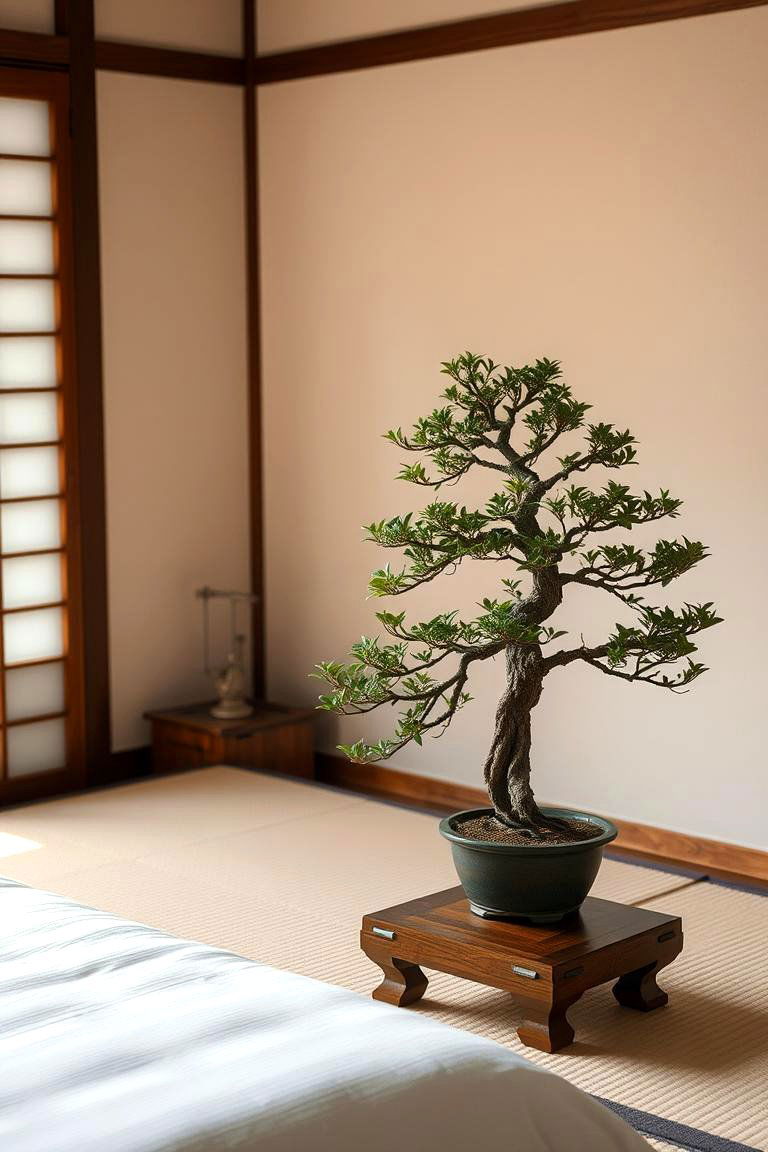
Bringing a touch of nature indoors is essential in Japanese design, and a carefully chosen indoor plant, such as a bonsai tree, can be a beautiful addition to your bedroom. Bonsai, with their meticulously sculpted forms, represent harmony and balance. Place it strategically to add a focal point and a touch of living art to your space. Remember to select a plant that thrives in the light conditions of your bedroom. Integrating natural elements like a bonsai enhances the sense of tranquility and connection to the natural world.
11. Soften the Lighting with Elegant Paper Lanterns (Andon)
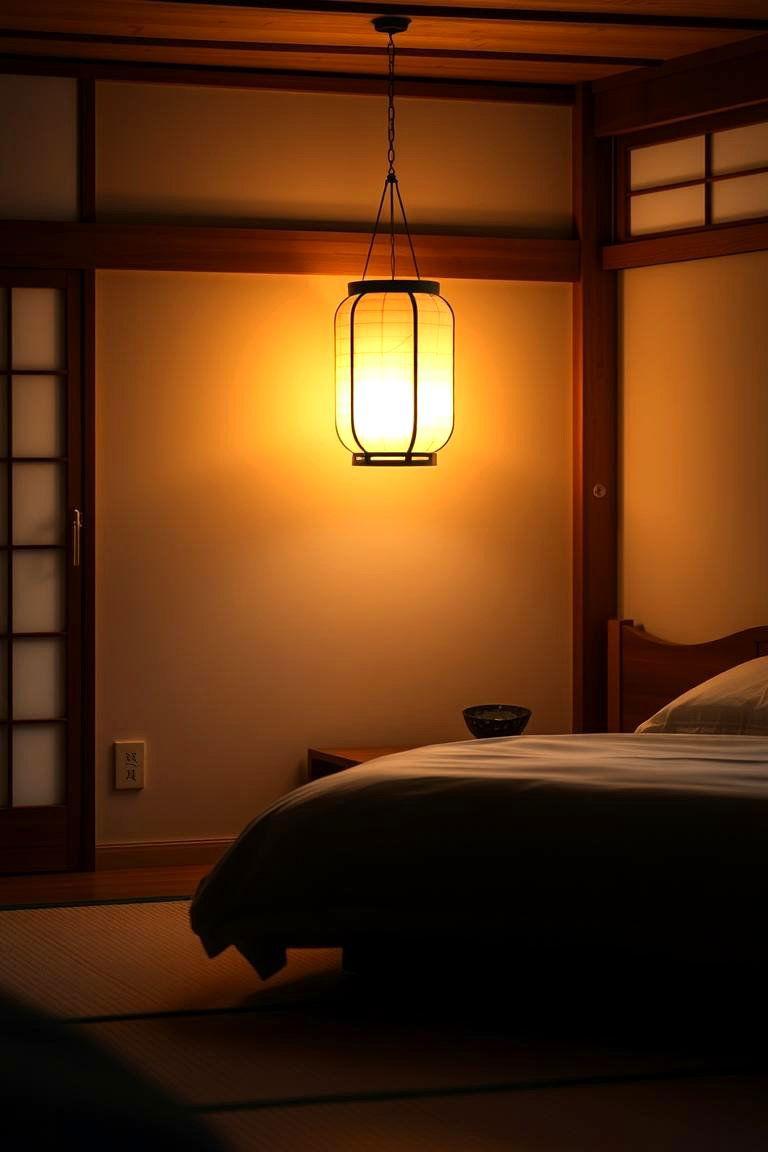
The gentle glow of paper lanterns, known as andon, creates a warm and inviting ambiance in a Japanese bedroom. These lanterns, traditionally made with wooden frames and washi paper, diffuse light softly, avoiding harsh shadows. Consider using them as bedside lamps or as hanging fixtures to cast a soothing illumination throughout the room. The delicate beauty of paper lanterns adds a touch of traditional charm and contributes to the overall feeling of calm and relaxation.
12. Designate a Quiet Corner for Meditation and Reflection
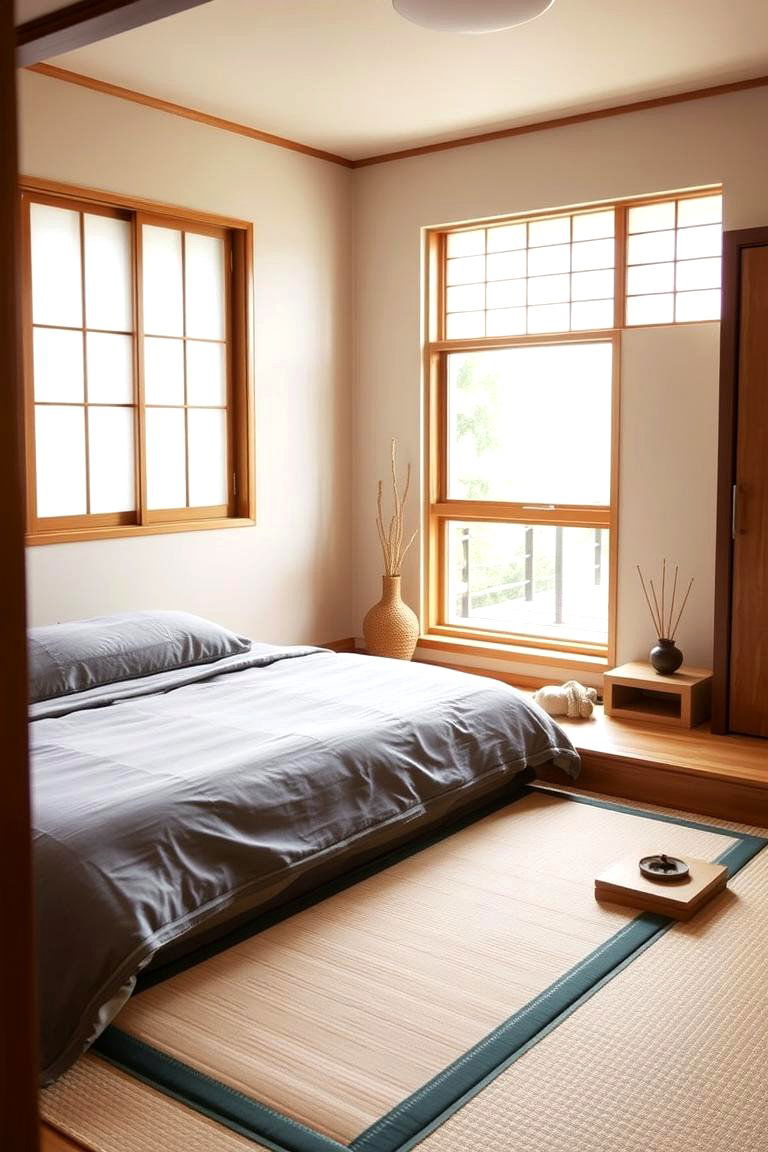
To further enhance the sense of tranquility, consider creating a small meditation corner within your Japanese-inspired bedroom. This could be a simple space with a comfortable floor cushion (zabuton) and perhaps a small table for incense or a calming object. The purpose is to have a dedicated area for mindfulness and reflection, promoting mental well-being. Even a small, designated space can make a significant difference in fostering a sense of inner peace within your bedroom.
13. Maximize Natural Light While Maintaining Privacy
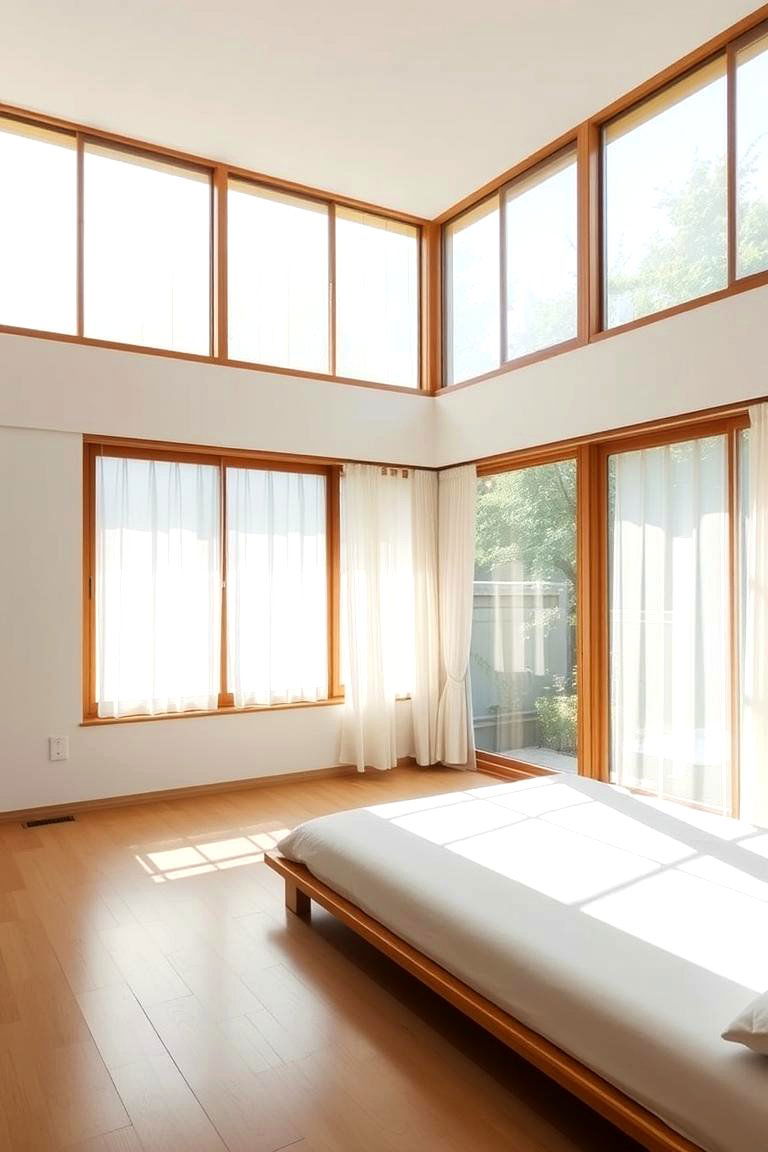
An important aspect of Japanese design is the appreciation of natural light. Aim to maximize the amount of daylight entering your bedroom, as this contributes to a bright and airy feel. However, privacy is also essential. Consider using sheer curtains or shoji screens to filter the light while still providing a sense of seclusion. The interplay of natural light and shadow can create a dynamic and calming atmosphere within the space.
14. Incorporate the Delicate Beauty of Washi Paper Elements
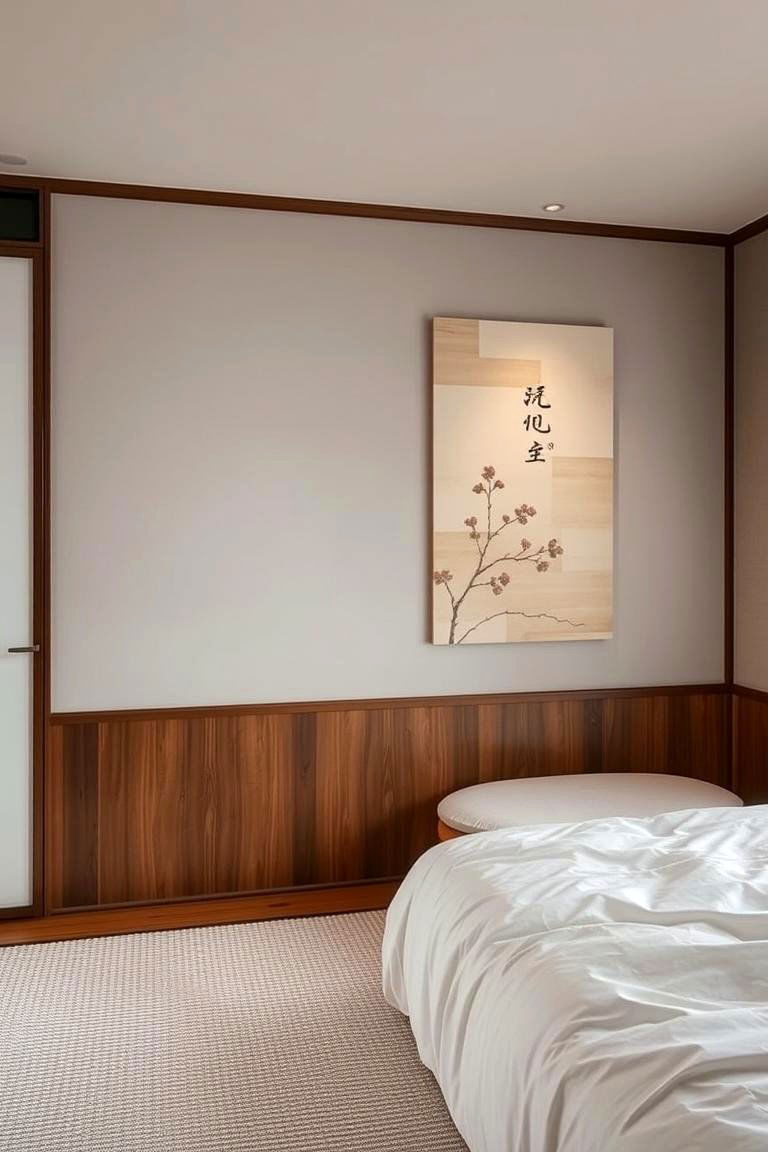
Washi paper, a traditional Japanese paper made from plant fibers, is renowned for its delicate texture and translucence. Beyond shoji screens and lanterns, consider incorporating washi paper in other decorative elements, such as wall art or small accessories. Its subtle beauty adds a layer of sophistication and cultural authenticity to your bedroom. The soft, warm tones of washi paper can also contribute to the overall calming ambiance of the space.
15. Create a Focal Point with a Traditional Tokonoma Alcove
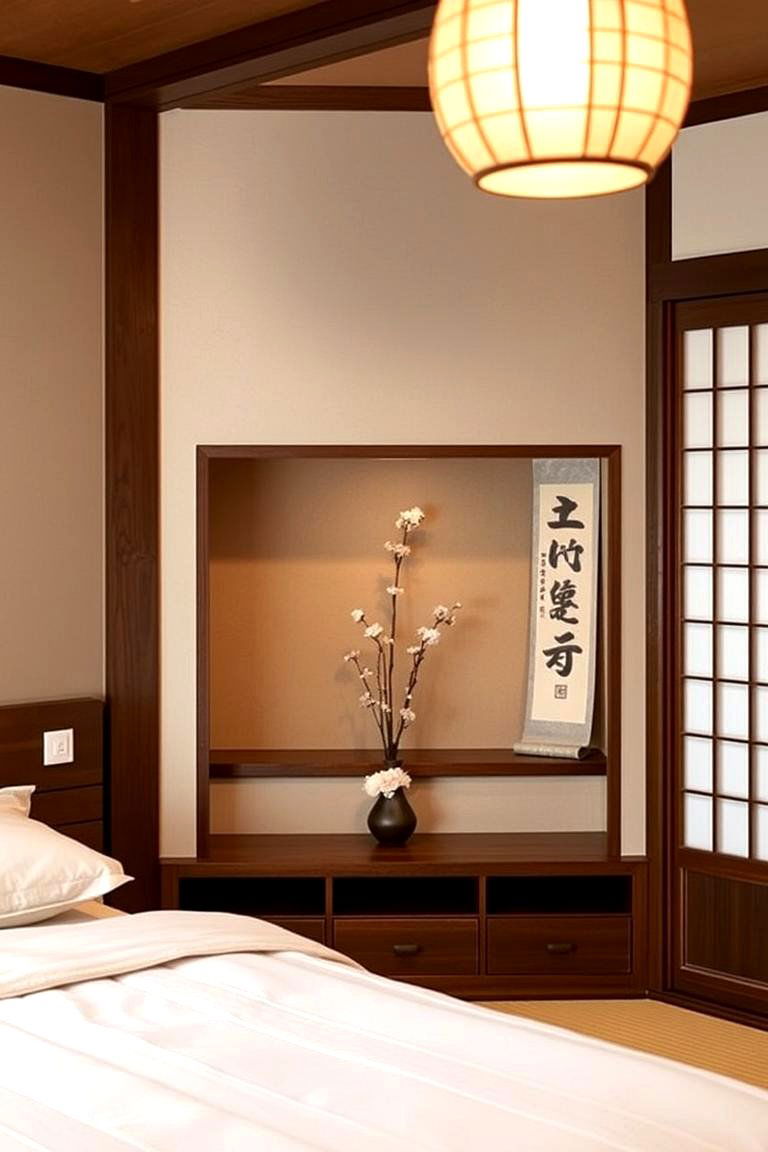
In traditional Japanese homes, the tokonoma is a recessed alcove used for displaying treasured items such as calligraphy scrolls, flower arrangements (ikebana), or small works of art. While you may not have a built-in tokonoma, you can create a similar focal point in your bedroom. This could be a simple shelf or a designated area where you display a meaningful object or piece of art. The tokonoma serves as a visual anchor and adds a touch of cultural significance to the room.
16. Enhance Comfort with Traditional Floor Cushions (Zabuton)
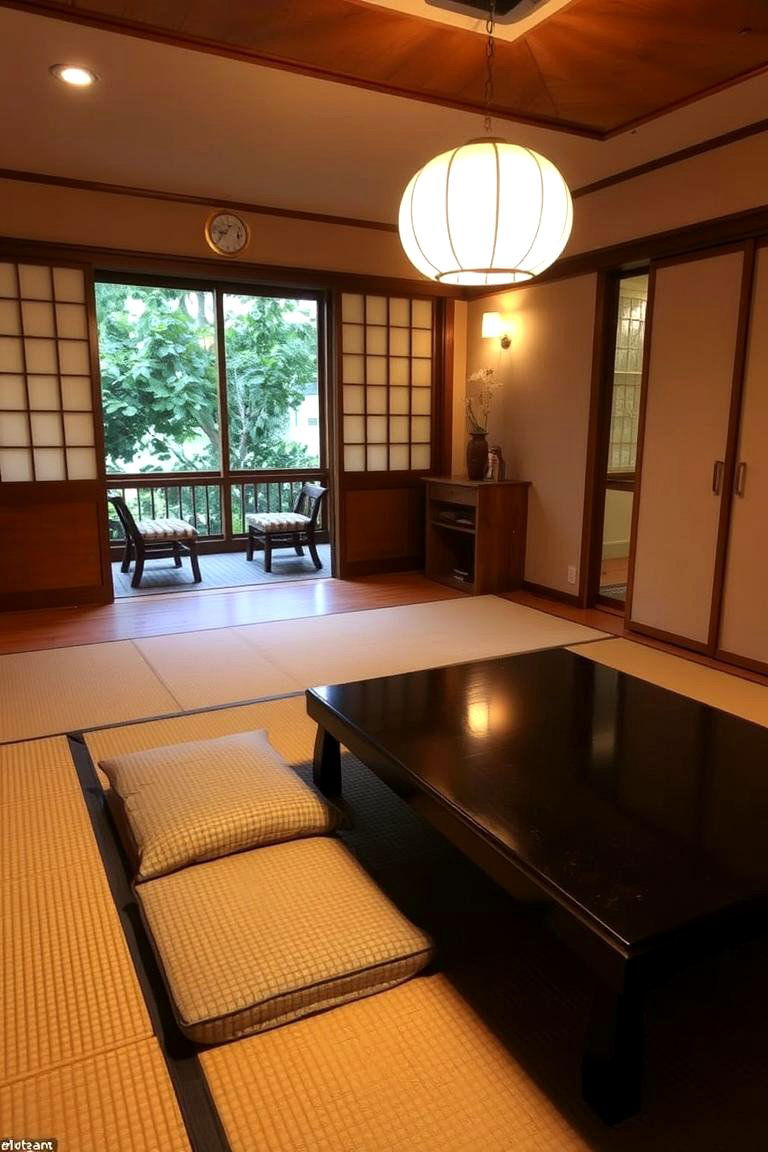
For added comfort and a touch of Japanese tradition, incorporate zabuton, flat floor cushions, into your bedroom design. These cushions can be used for seating in a meditation corner or simply placed on the floor for a relaxed feel. Choose zabuton in neutral colors or with subtle Japanese-inspired patterns to complement your overall design. They not only provide comfort but also enhance the authentic Japanese aesthetic of the space.
17. Opt for Simple and Meaningful Wall Art

When it comes to wall decor in a Japanese bedroom, less is definitely more. Choose one or two pieces of simple and meaningful artwork, such as a calligraphy scroll, a woodblock print, or a minimalist abstract piece. Avoid overly busy or distracting artwork. The focus should be on pieces that evoke a sense of calm and contemplation. Thoughtfully selected wall art can add personality to your bedroom without disrupting its serene atmosphere.
18. Introduce the Versatility and Beauty of Bamboo Accents
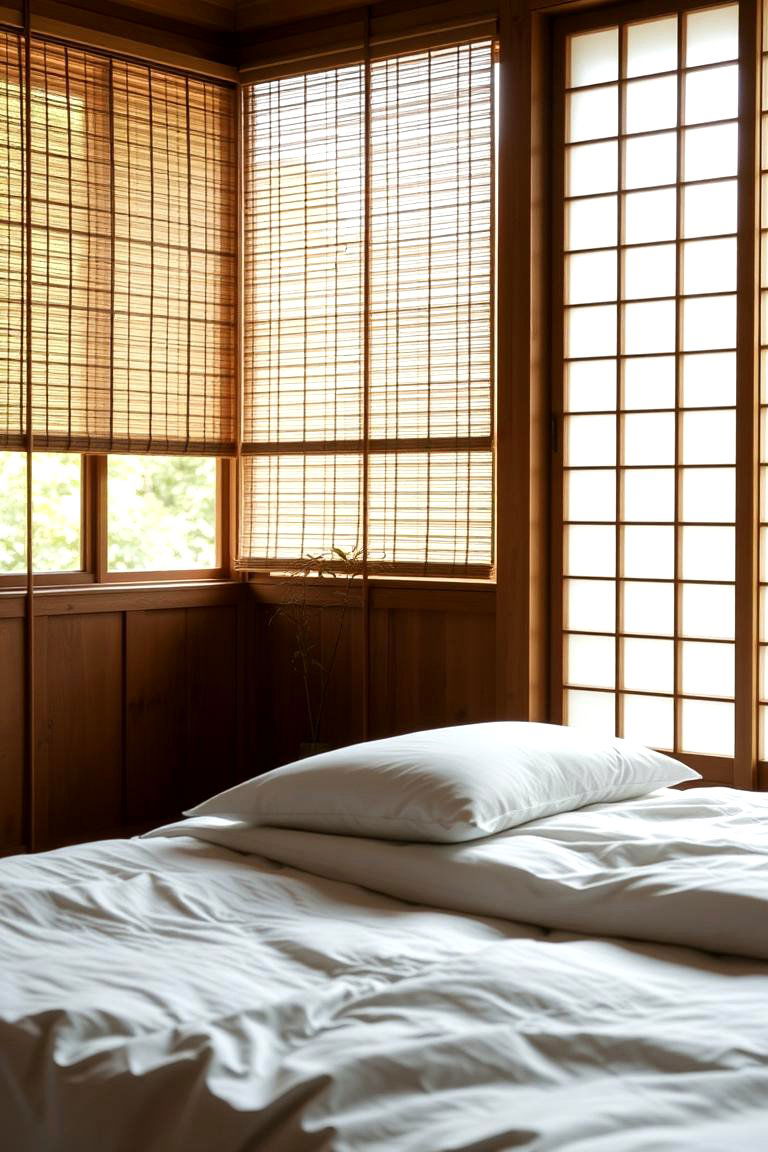
Bamboo is a highly versatile and aesthetically pleasing material that is frequently used in Japanese design. Consider incorporating bamboo accents in your bedroom through elements like window blinds, small decorative objects, or even furniture details. Its natural texture and light color add a touch of organic elegance and warmth to the space. Bamboo is also a sustainable material, making it an environmentally conscious choice for your design.
19. Display Select Items with Open Shelving
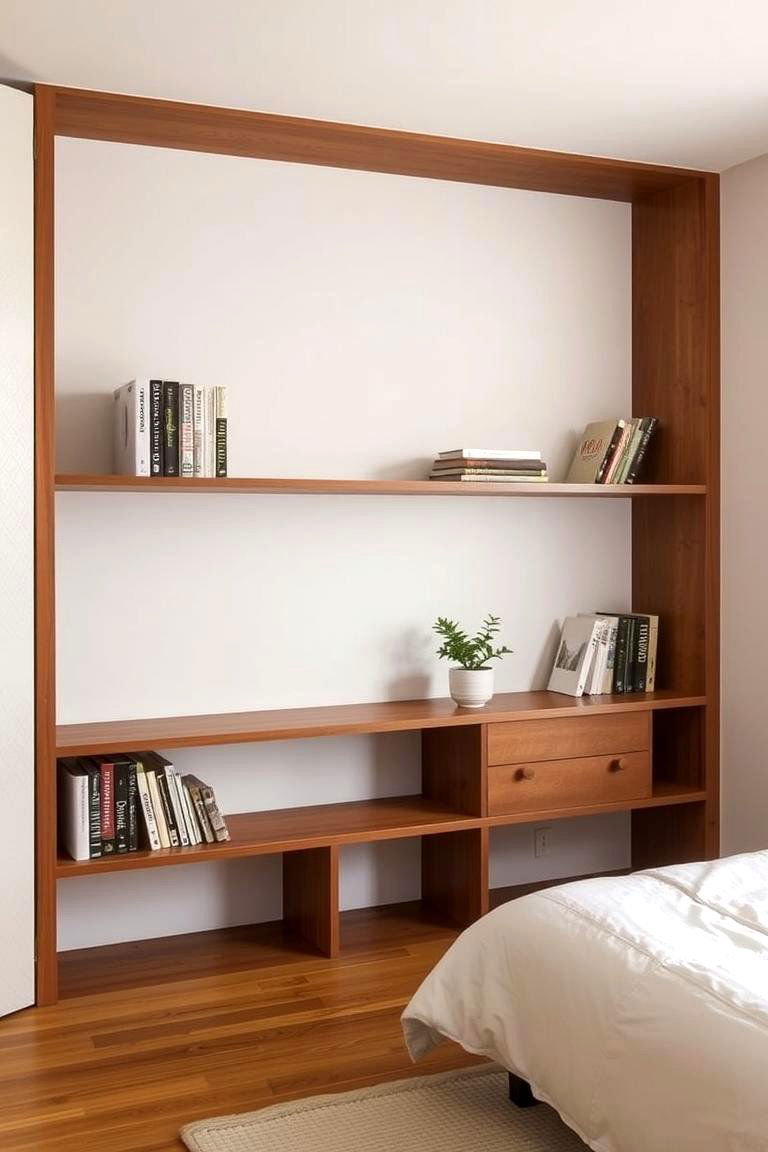
While minimizing clutter is key, open shelving can be used strategically to display a few carefully chosen items. This could include books, small plants, or decorative objects that align with the minimalist aesthetic. Opt for simple, clean-lined shelves made from natural wood to maintain the overall harmony of the room. Open shelving allows you to showcase your favorite pieces without creating a cluttered feel.
20. Maintain Harmony with Clean Lines and Shapes
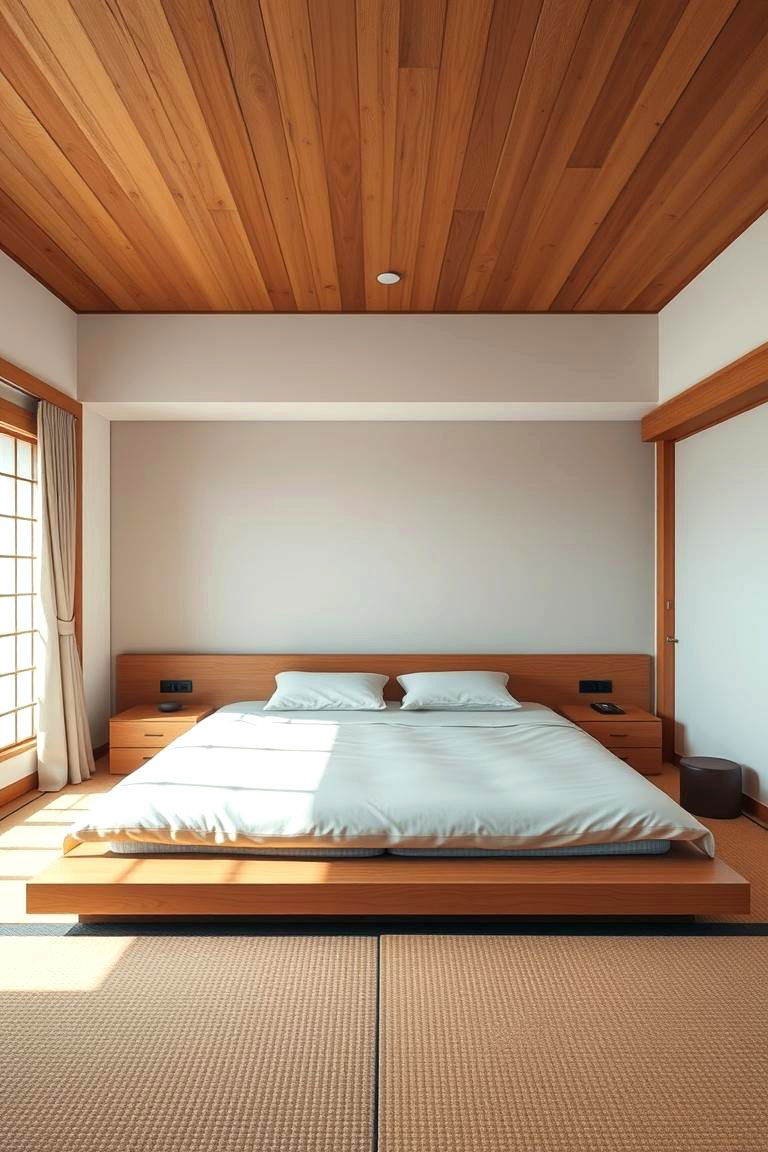
A defining characteristic of Japanese design is its emphasis on clean lines and simple geometric shapes. Choose furniture and decor items that reflect this aesthetic, avoiding ornate details or overly complex forms. The focus is on functionality and the inherent beauty of basic shapes. This design principle contributes to the sense of order and tranquility that is central to the Japanese bedroom experience.
21. Prioritize Functionality in Every Element
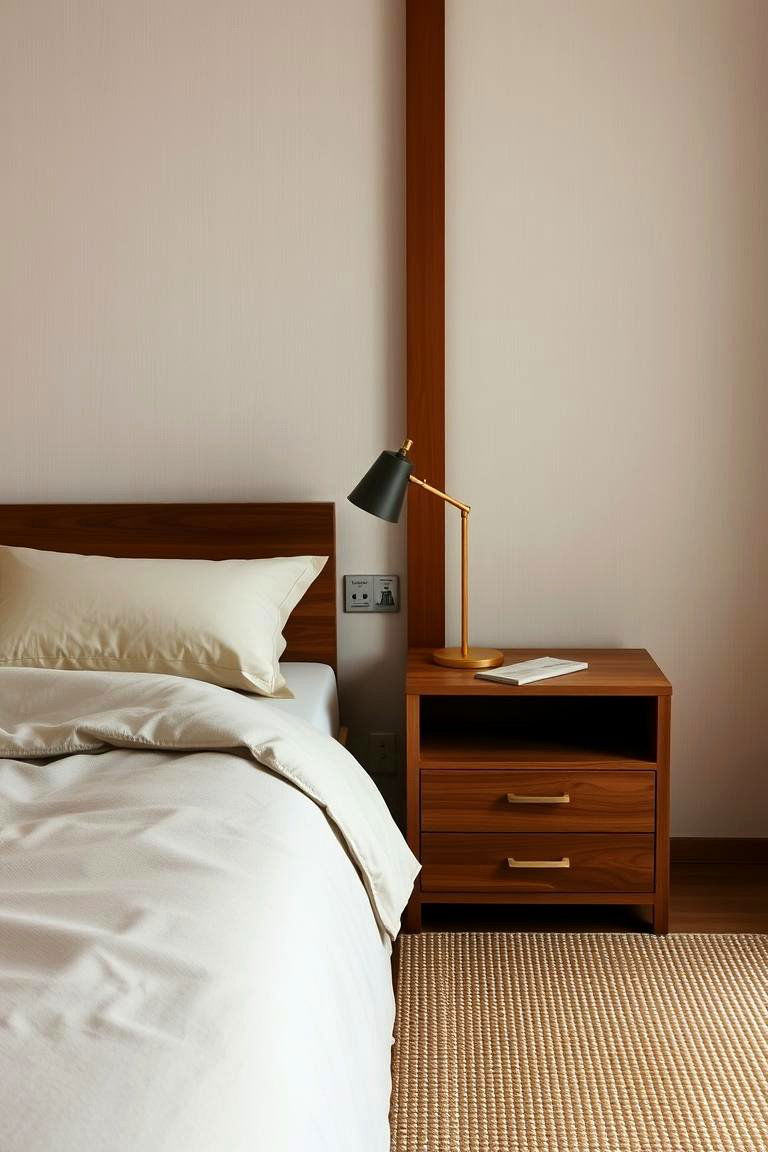
In a Japanese bedroom, every element serves a purpose. There is no room for purely decorative items that do not enhance the functionality or the overall sense of peace. When selecting furniture and accessories, prioritize practicality and efficiency. This could mean choosing a nightstand with built-in storage or a simple lamp that provides focused light for reading. This focus on functionality ensures that the bedroom remains a serene and usable space.
22. Foster a Deep Connection to the Natural World
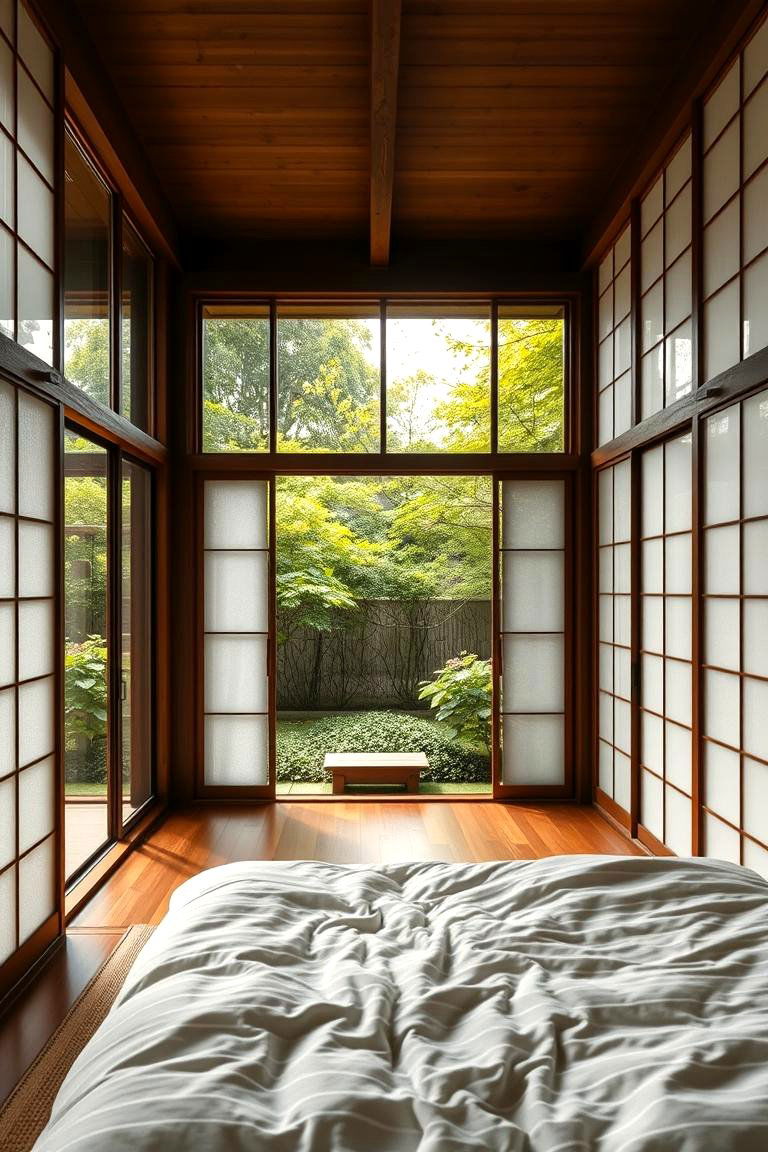
Japanese design philosophy emphasizes a strong connection to nature. Beyond using natural materials like wood and bamboo, consider ways to further integrate the outdoors into your bedroom. This could involve positioning your bed to have a view of a garden or incorporating natural elements like stones or water features (if feasible). Even simply ensuring good ventilation and access to fresh air can enhance this connection.
23. Cultivate a Serene and Calm Atmosphere
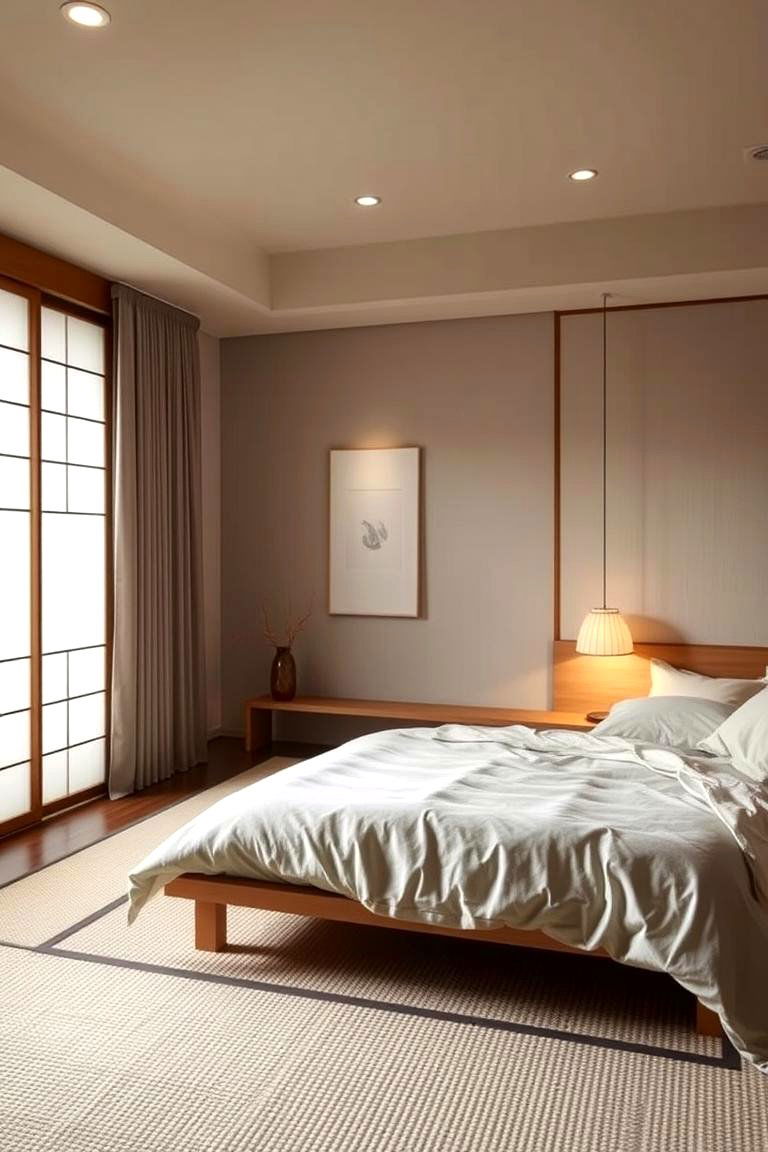
Ultimately, the goal of a Japanese bedroom design is to create a space that promotes serenity and calm. Every design choice should contribute to this feeling, from the color palette to the selection of furniture and decor. Pay attention to the overall ambiance of the room and make adjustments as needed to create a peaceful retreat where you can relax and rejuvenate.
24. Embrace the Power of De-cluttered Space
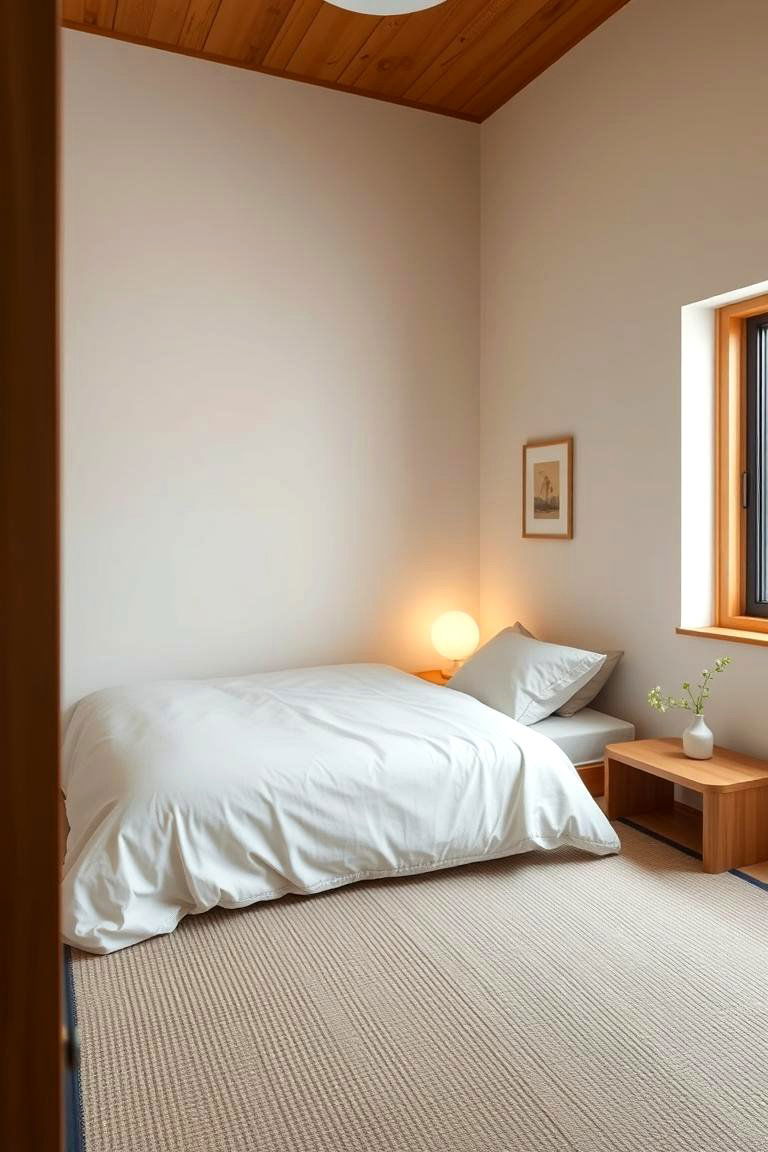
Perhaps the most crucial aspect of Japanese bedroom design is the commitment to de-cluttering. A clean and organized space is essential for creating a sense of peace and tranquility. Regularly remove items you no longer need or use, and ensure that everything has its designated place. Embracing the power of de-cluttered space will significantly enhance the calming atmosphere of your Japanese-inspired bedroom.
Conclusion:
The journey into Japanese bedroom design reveals a profound appreciation for simplicity, nature, and inner peace. By thoughtfully incorporating elements like tatami flooring, shoji screens, and minimalist decor, you can transform your bedroom into a sanctuary of tranquility. The emphasis on natural materials, clean lines, and functional design not only creates an aesthetically pleasing space but also fosters a sense of calm and well-being. Embracing these principles allows you to cultivate a personal retreat that reflects the timeless elegance and serene spirit of Japanese design. Continue to explore the nuances of these design philosophies to further enhance your understanding and create your ideal Japanese-inspired haven.


